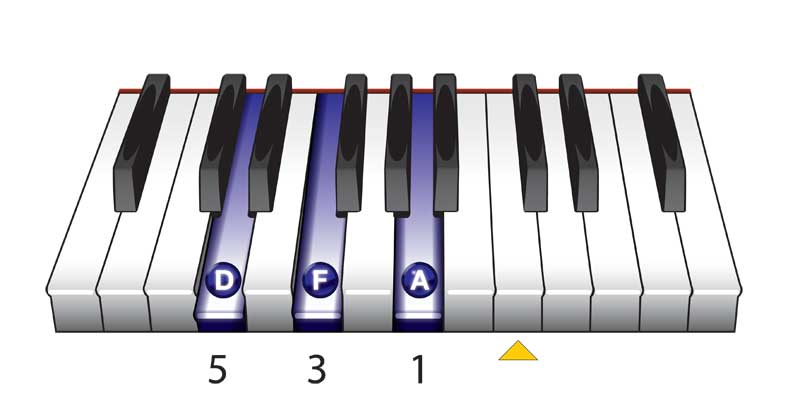
LESSON SIX
The Dotted Quarter Note
A dot written after a quarter note indicates that you should hold the note for one and a half beats. A dotted quarter note is often followed by an eighth note.
| 17 |
| 18 | Lullaby |
Brahms’ Lullaby is one of the most well known melodies of all time. It is written here in the key of C major and uses dotted quarter notes in bars 1, 3, 9 and 13.
First And Second Endings
The next song contains first and second endings. The first time you play through the song, play the first ending, ( Z ), then go back to the beginning. The second time you play through the song, play the second ending ( X ) instead of the first.
| 19 | Jingle Bells |
Jingle Bells is one of the most popular Christmas songs. It contains first and second endings. The first time through, play from the beginning to the end of bar 8. Then play again from the beginning, but this time do not play bars 7 and 8 (the first ending) but play bars 9 and 10 (the second ending).
Minor Chords
There are three main types of chords: major, seventh and minor chords. You have already learned some major chords and one seventh chord. The first minor chord you will learn is the D minor chord. Minor chords are indicated by a small "m" right written after the chord name, for example: Dm.
The D Minor Chord
Dm
Chord Symbol

To play the D minor chord, use the first, third and fifth fingers of your left hand.
The Common Time Signature
This symbol is called common time. It means exactly the same as *.
| 20 | Mussi Den |
This song is in the key of C major and contains a Dm chord in bar 13. It also contains two lead-in notes at the beginning of the song.
| 21 | Scarborough Fair |
Scarborough Fair is a folk music standard. It contains D minor chords and also introduces the D note above the C note which is one octave higher than middle C. When changing between the Dm and F chords, keep your first finger in position, as it is common to both chords.